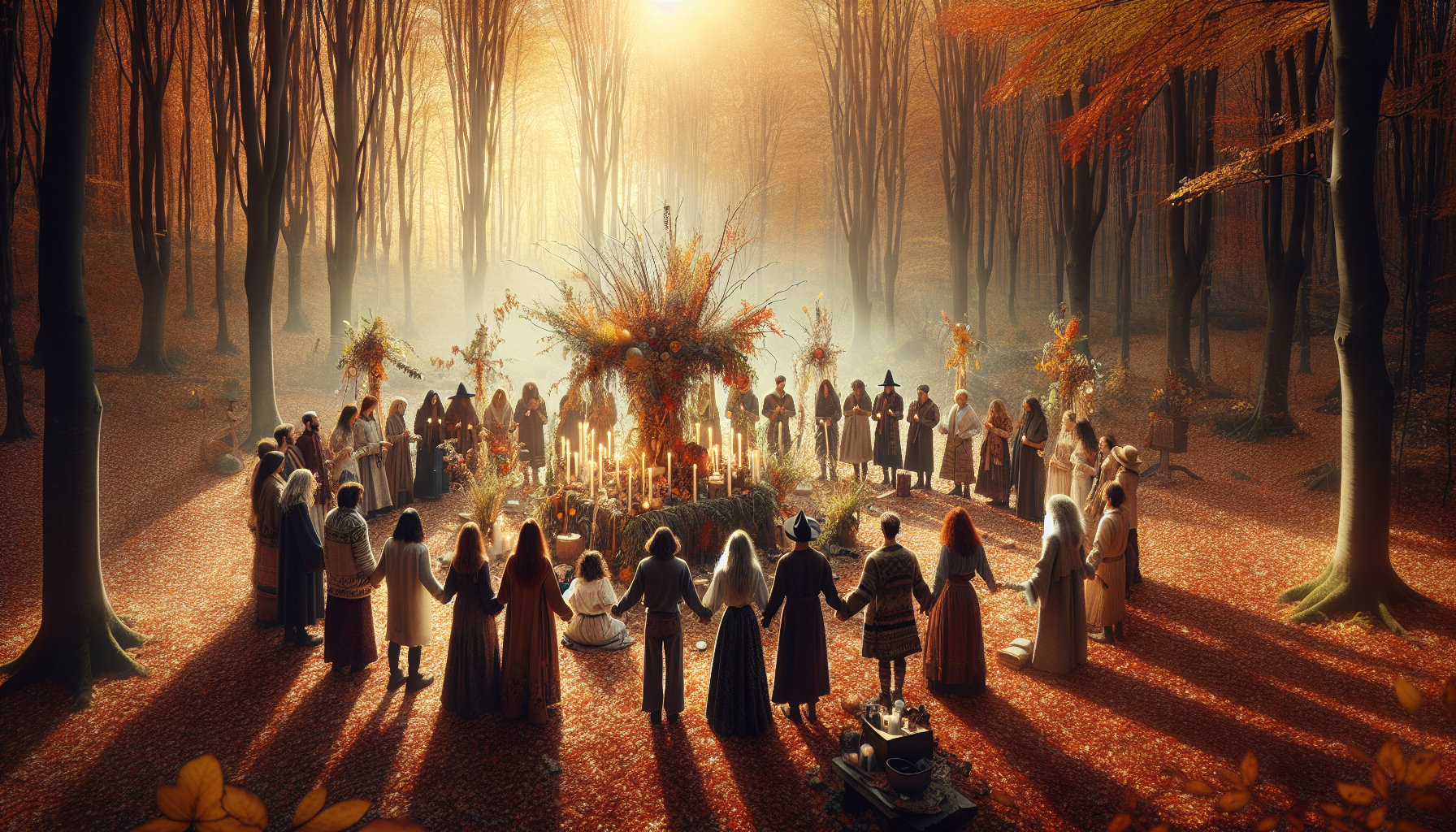Nestled within the rugged landscapes of South America, the Andean mountains rise majestically, their peaks often shrouded in clouds and mystery. These towering giants, revered for centuries by the indigenous peoples who call this region home, are more than just geological formations. They are the Apus, spirit mountains imbued with divine presence and power. As we embark on this journey through ancient cosmology, we will uncover the mystical significance these sacred mountains hold in the Andean worldview, a perspective that intertwines nature, spirituality, and community in a seamless tapestry. 🌄
For the indigenous cultures of the Andes, the mountains are not merely a backdrop to daily life; they are active participants, guardians, and ancestors. The Apus are believed to possess souls, with each peak housing a spirit that governs the land and influences the lives of those who dwell in its shadow. These beliefs are not relics of the past but vibrant traditions that continue to shape cultural identities and practices today. Understanding the role of the Apus requires us to delve into a rich tapestry of myth, legend, and ritual, where the physical and metaphysical worlds are inextricably linked.
Our exploration will lead us through the heart of Andean cosmology, a system of beliefs that challenges Western notions of spirituality and the natural world. We will examine how the Apus serve as intermediaries between the earthly realm and the divine, acting as conduits for communication with Pachamama, the revered Earth Mother, and other deities. By studying ancient rituals and contemporary practices, we will gain insight into how the Andean peoples maintain a harmonious relationship with these sacred mountains, ensuring the well-being of their communities and the environment.
Moreover, we will delve into the fascinating intersection of history, culture, and spirituality that characterizes the Andes. From the time of the Inca Empire to the present day, the reverence for the Apus has persisted, adapting to changes yet retaining its core essence. We will explore the historical narratives and archaeological evidence that reveal how these mountains have been central to the socio-political and religious life of the region. This journey will not only illuminate the past but also offer a glimpse into how these ancient traditions continue to thrive in a modern world.
Join us as we unravel the mystical power of the Andean spirit mountains. Through this exploration, you will gain a deeper appreciation for the profound wisdom embedded in these ancient beliefs and the enduring connection between humanity and nature. Whether you are a seeker of spiritual insight, a lover of history, or simply curious about the world, this journey promises to enrich your understanding of a culture that sees the divine in every peak and valley. Let us ascend together into the heights of the Andes and discover the sacred stories written in stone and sky. ✨
Understanding the Mystical Power of Andean Spirit Mountains
The Andean Spirit Mountains, known as “Apus” in the indigenous Quechua language, hold a significant place in the cosmology of the Andean people. These majestic peaks are not just natural wonders; they are revered as powerful deities and protectors of the indigenous communities that inhabit their surroundings. The reverence for these mountains is deeply embedded in the Andean culture, where nature and spirituality intertwine to create a rich tapestry of beliefs and practices.
The Andes mountain range stretches over 7,000 kilometers along the western coast of South America, passing through countries like Colombia, Ecuador, Peru, Bolivia, Chile, and Argentina. Among these towering peaks, several are regarded as sacred, each with its unique mythology and spiritual significance. The veneration of these spirit mountains dates back to pre-Columbian times, when ancient civilizations such as the Incas incorporated these natural landmarks into their religious and cosmological frameworks.
The Andean cosmology is a complex system that integrates the natural world with spiritual beliefs. The Apus are considered intermediaries between the human and divine realms, and they are believed to possess the power to influence the lives of the people who honor them. This belief system has been passed down through generations, manifesting in various rituals, ceremonies, and offerings that seek to maintain harmony between humanity and nature.
The Role of Apus in Andean Spirituality
In Andean spirituality, the Apus are more than just mountains; they are living entities imbued with spirits that oversee the well-being of the communities in their vicinity. These spirit mountains are often associated with specific deities who are believed to reside within them, and they are thought to hold the power to affect the weather, fertility of the land, and the health of the people. This belief highlights the intimate connection between the Andean people and their natural environment, emphasizing a deep respect for the land and its resources.
The reverence for Apus is evident in the numerous rituals and ceremonies conducted to honor these sacred peaks. One of the most significant of these is the “Pago a la Tierra” or “Payment to the Earth” ceremony, where offerings are made to the mountains to ensure prosperity and protection. These offerings often include coca leaves, alcohol, and other items deemed valuable, and they are presented with prayers and songs to express gratitude and seek blessings.
Furthermore, the spiritual significance of the Apus extends beyond individual communities. Many of these mountains are considered pilgrimage sites, attracting people from various regions who come to pay their respects and seek spiritual enlightenment. These pilgrimages often involve challenging treks to high altitudes, where participants engage in meditation and reflection, seeking to connect with the divine presence believed to dwell within the mountains.
Ancient Cosmology and the Andean Worldview
The Andean worldview is characterized by a profound sense of interconnectedness between the physical and spiritual realms. This cosmology is rooted in the belief that the universe is composed of three overlapping worlds: the Hanaq Pacha (the upper world), the Kay Pacha (the middle world), and the Ukhu Pacha (the inner world). The Apus are believed to reside in the Hanaq Pacha, serving as bridges between the earthly and celestial domains.
| World | Description |
|---|---|
| Hanaq Pacha | The upper world, home to the gods and celestial beings. |
| Kay Pacha | The middle world, where humans and nature coexist. |
| Ukhu Pacha | The inner world, associated with ancestors and the afterlife. |
The concept of Pachamama, or Mother Earth, is also integral to Andean cosmology. Pachamama is revered as a nurturing and protective force, responsible for the fertility of the land and the well-being of its inhabitants. This deity is often honored in conjunction with the Apus, highlighting the symbiotic relationship between the mountains and the earth. The veneration of Pachamama and the Apus underscores the holistic worldview of the Andean people, where all elements of nature are interconnected and deserving of respect and reverence.
Modern Interpretations and Practices
In contemporary times, the reverence for the Apus continues to thrive, albeit with some adaptations to modern contexts. While traditional rituals and ceremonies remain integral to Andean spirituality, new interpretations and practices have emerged, reflecting the dynamic nature of cultural beliefs. For instance, eco-tourism has become a significant aspect of engaging with the spirit mountains, offering visitors an opportunity to experience the sacredness of these peaks while promoting environmental conservation.
Many local communities have embraced eco-tourism as a means of preserving their cultural heritage and fostering sustainable development. This approach not only provides economic benefits but also raises awareness about the importance of protecting the natural environment and the cultural significance of the Apus. Visitors are often encouraged to participate in traditional ceremonies, gaining a deeper understanding of the spiritual practices that have sustained the Andean people for centuries.
Challenges and Opportunities for Cultural Preservation
While the reverence for the Apus remains strong, the Andean communities face several challenges in preserving their cultural heritage. Modernization, environmental degradation, and climate change pose significant threats to the traditional practices and beliefs associated with the spirit mountains. As the impacts of these issues become increasingly apparent, there is a pressing need to address them through collaborative efforts that prioritize cultural preservation and environmental sustainability.
- Establish guidelines for respectful visitor behavior.
- Promote community-led conservation efforts.
- Encourage sustainable tourism practices.
Climate change is another pressing issue that threatens the delicate ecosystems surrounding the Apus. The melting of glaciers, changes in weather patterns, and loss of biodiversity are some of the environmental challenges faced by the Andean communities. In response, efforts are being made to integrate traditional ecological knowledge with modern scientific approaches to develop adaptive strategies that enhance resilience and sustainability.
Engaging with the Mystical Power of the Apus
For those interested in exploring the mystical power of the Andean spirit mountains, there are numerous ways to engage with these sacred peaks. Whether through participating in traditional ceremonies, embarking on spiritual retreats, or supporting community-led conservation efforts, there are ample opportunities to connect with the spiritual essence of the Apus and contribute to their preservation.
For a visual journey through the mystical power of the Andean spirit mountains, watch the following video: The Mystical Andes – A Spiritual Journey (Documentary) by Andes Mystica. 📹

Conclusion
**Conclusion: Embracing the Mystical Power of Andean Spirit Mountains**
In our exploration of the Andean Spirit Mountains, we have traversed a landscape rich with history, spirituality, and cultural significance. This journey through ancient cosmology has unveiled the layers of meaning and tradition that have been woven into the very fabric of the Andes. From the awe-inspiring peaks that punctuate the horizon to the profound beliefs that animate the lives of those who call this region home, the Andean Spirit Mountains offer a remarkable lens through which we can view the intersection of nature, humanity, and the divine.
**Recap of Key Points**
Throughout our exploration, we have delved into several key aspects of the Andean Spirit Mountains. Firstly, we examined the historical context of these mountains, understanding their role in the lives of the indigenous peoples who have revered them for millennia. The concept of *apus*, or mountain spirits, serves as a testament to the deep spiritual connection that these communities maintain with their natural surroundings. This belief system not only influences their religious practices but also informs their social structures and daily lives.
Secondly, we considered the cosmological significance of the mountains. The Andean cosmology is intricately tied to the natural world, with the mountains serving as sacred intermediaries between humans and the divine. These peaks are seen as living entities, imbued with power and wisdom, and they play a pivotal role in rituals and ceremonies designed to honor and appease the gods.
Moreover, the cultural traditions that have emerged around these sacred sites offer insight into the resilience and adaptability of Andean communities. From the intricate weaving of narratives that link the physical and spiritual realms to the communal practices that ensure the continuity of these traditions, the Andean people have demonstrated a remarkable ability to preserve their heritage in the face of external pressures and change.
**The Importance of the Topic**
The exploration of the Andean Spirit Mountains is not merely an academic exercise; it is an invitation to reflect on the broader implications of how we understand and engage with the natural world. In an era marked by environmental challenges and cultural homogenization, the lessons embedded within the Andean cosmology are particularly poignant. They remind us of the value of living in harmony with nature, respecting the interconnectedness of all life, and preserving the cultural narratives that enrich our global tapestry.
Furthermore, this exploration highlights the importance of recognizing and respecting indigenous knowledge systems. As we grapple with complex global issues, the wisdom of ancient cultures like those of the Andes can offer innovative perspectives and solutions. The Andean approach to sustainability, community cohesion, and spiritual fulfillment provides a model that is both timeless and timely.
**Inspiration and Call to Action**
As we conclude our journey through the mystical power of the Andean Spirit Mountains, we are left with a sense of wonder and appreciation for the profound insights these sacred sites offer. We are inspired by the resilience and wisdom of the Andean people and encouraged to integrate some of their values and practices into our own lives.
I invite you, dear reader, to share your thoughts and reflections on this journey. What aspects of the Andean cosmology resonate with you? How can we apply the lessons of the Andean Spirit Mountains in our efforts to create a more harmonious and sustainable world? Your insights are invaluable, and by sharing them, you contribute to the ongoing dialogue that seeks to bridge cultures and foster understanding.
Feel free to share this article with others who might find it enlightening, and consider exploring further resources to deepen your understanding of Andean cosmology. Websites such as [Smithsonian’s Andean Ethnography](https://www.smithsonianmag.com/) and [National Geographic’s Indigenous Cultures](https://www.nationalgeographic.com/) offer additional insights into the rich tapestry of Andean culture and spirituality.
As we part ways, let us carry the spirit of the Andean mountains within us, a reminder of the power and beauty that resides in the world around us. May we strive to honor the wisdom of the past, nurture the present, and safeguard the future for generations to come. 🌿
Thank you for embarking on this journey with us. Let us continue to explore, learn, and grow together.
Toni Santos is a visual storyteller and symbolic naturalist whose creations explore the hidden ecologies and forgotten bonds between humans and nature, as whispered through ancient lore. Through an intuitive and myth-sensitive lens, Toni reveals the sacred choreography between flora, fauna, and human spirit — a world where trees once spoke, rivers remembered, and every herb carried a secret name.
His journey is rooted in the esoteric — in the rituals of forest-dwellers, the botanical codes of shamans, and the unspoken pacts that shaped how ancient peoples lived in deep, reciprocal harmony with the natural world. From sacred groves to serpent-guarded springs, each of Toni’s works reflects a symbolic relationship long obscured by modern forgetfulness.
With a background in visual design and ancestral aesthetics, Toni merges storytelling with sacred ecology. His pieces don’t simply illustrate — they channel. Drawing from myth, mysticism, and lost herbal traditions, he crafts visuals that resonate with the old wisdom: that nature is not background, but kin.
As the creative spirit behind Vizovex, Toni shares collections, visual studies, and articles that illuminate the occulted connections between human life and the wild world. His work calls on us to remember — not just with the mind, but with the senses and the soul — the profound dialogues our ancestors once had with earth, plant, and animal.
His work is a tribute to:
The mythic language of trees, stones, and roots
Forgotten pacts between healers and the wilderness
The sacred knowledge carried in nature’s unseen patterns
Whether you’re a seeker of ancient plant-lore, a mystic attuned to seasonal cycles, or simply someone who hears the forest speak, Toni welcomes you to wander a space where symbolism, nature, and spirit entwine — one myth, one leaf, one vision at a time.





